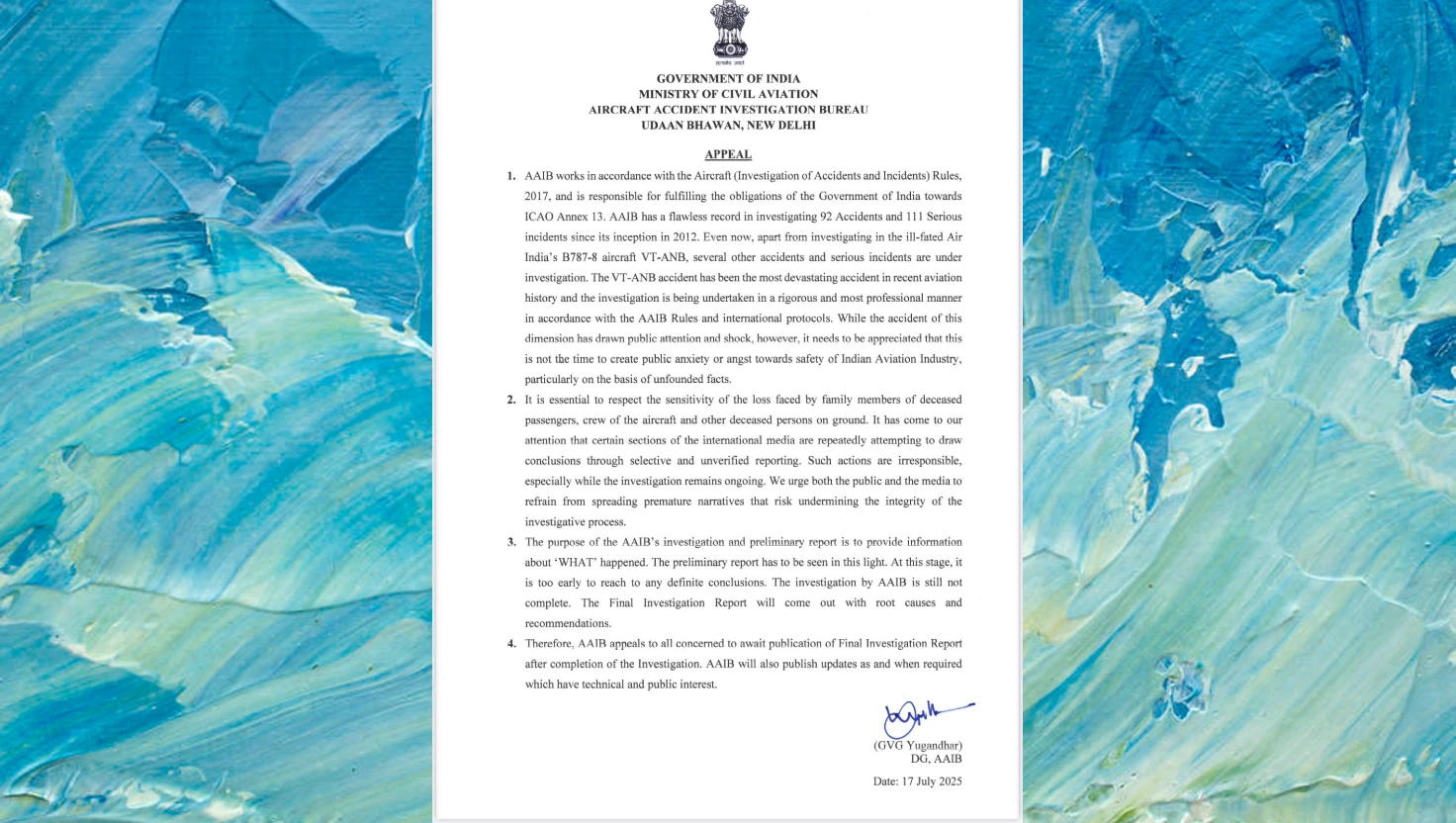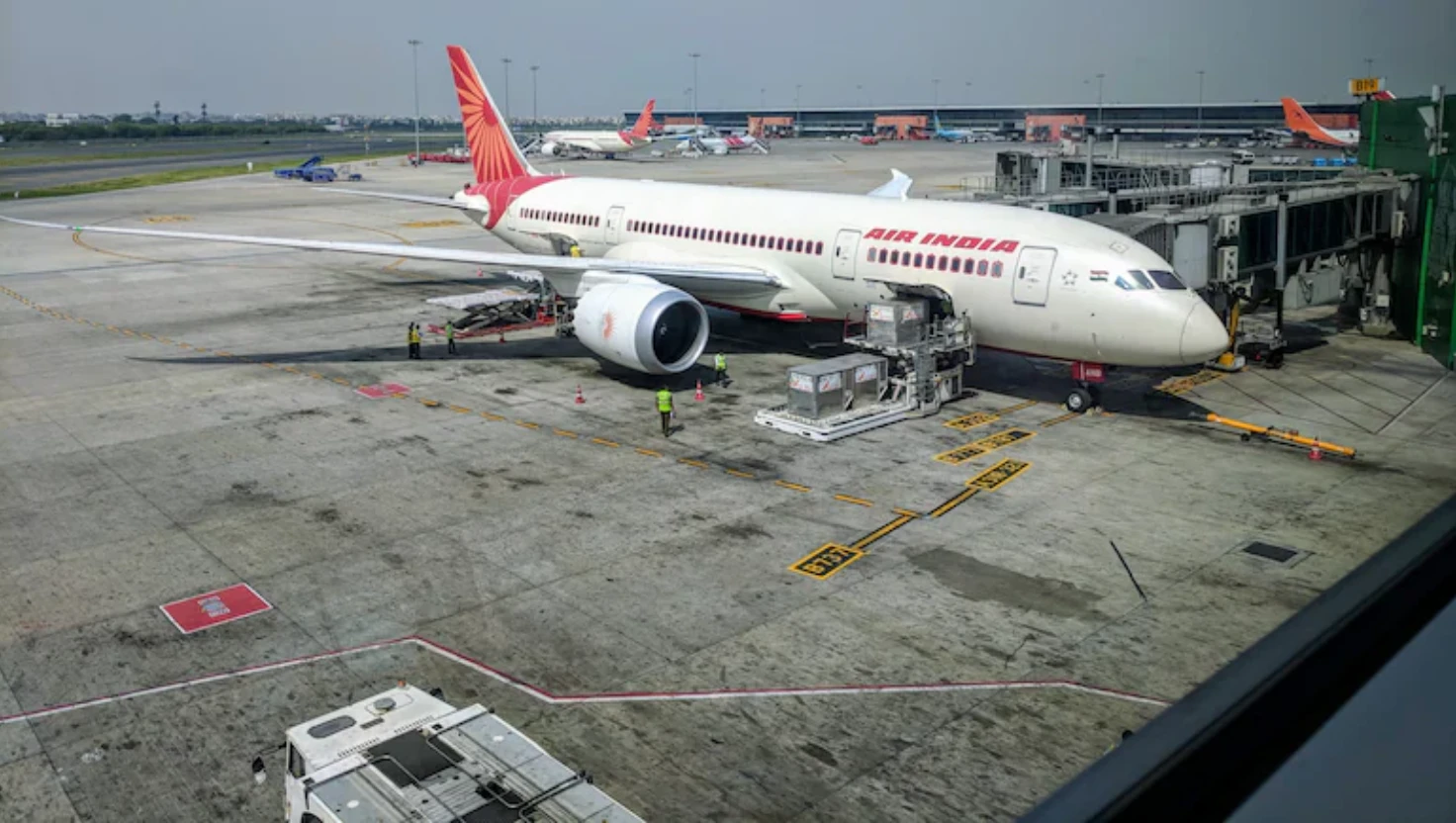Air India Crash in Ahmedabad: Engines Lost Power After Fuel Cutoff, AAIB Report Reveals

A firefighter stands next to the crashed Air India Boeing 787-8 Dreamliner aircraft in Ahmedabad, India, June 13, 2025. (REUTERS File)
India’s air accident authority says both engines on the Air India Boeing 787 lost power after fuel was cut off mid-flight. A full investigation is ongoing.
The report offers the first official account of the crash of flight AI 171, which was en route to London Gatwick on 12 June before it crashed into a medical hostel complex near Ahmedabad airport.
Fuel Cutoff Caused Engine Shutdown
According to the AAIB, both engines of the Dreamliner, manufactured by Boeing and powered by General Electric GEnx-1B engines, lost thrust shortly after the aircraft became airborne. Flight data shows the fuel cutoff switches for both engines were moved from 'Run' to 'Cutoff' just after the aircraft reached a speed of 180 knots.
Although an automatic relight was attempted, only Engine 1 showed signs of recovery. Engine 2 failed to regain stable performance, despite several fuel reintroduction efforts.
The Ram Air Turbine (RAT), an emergency device designed to provide power during in-flight electrical failures, deployed immediately—indicating a total loss of onboard power supply. Flight data also confirmed that the aircraft's thrust levers were in idle at the time of impact, although they had previously been set to takeoff thrust.
The AAIB stated that “both engines were retrieved from the wreckage site and quarantined at a hangar,” and added that key components are undergoing further examination.
Cockpit Voice Recording Reveals Confusion
A recording from the cockpit captured one of the pilots asking the other, “Why did you cut off?”—to which the response was, “I did not do so.” The exchange has raised questions over possible technical malfunction or miscommunication.
Engine core speeds (N2) on both sides fell below idle levels, corroborating a near-complete loss of engine power. Exhaust Gas Temperatures (EGT) did rise during the attempted relight, indicating fuel combustion—but only one engine showed signs of partial recovery.
The aircraft’s aft flight data recorder was found to be too damaged to retrieve data by conventional means, according to the AAIB.
Routine Maintenance Completed Before Crash
Maintenance records show the aircraft’s most recent major line checks (L1-1 and L1-2) were carried out in line with schedule. The next comprehensive inspection, known as a D-check, was due in December 2025.
The left engine had been installed on 1 May, and the right on 26 March this year. At the time of the crash, four active Category C Minimum Equipment List (MEL) items had been recorded, including issues with the flight deck door visual surveillance system and airport map function, all of which had been deemed airworthy under regulatory provisions.
No Safety Advisory Issued Yet
So far, the AAIB has not issued any safety recommendations to Boeing, General Electric, or operators of the 787 aircraft.
This incident marks the first fatal accident involving the Boeing 787, a long-haul wide-body aircraft known for its fuel efficiency and composite materials. The crash has resulted in the first hull loss (total destruction of an aircraft) of the Dreamliner series.
The aircraft was carrying 241 passengers and crew when it crashed. Only one passenger survived. Nineteen people on the ground were also killed when the aircraft collided with a building used by BJ Medical College.
Next Steps in the Investigation
The AAIB says the investigation remains ongoing and will examine additional evidence from stakeholders. Further technical analysis will be conducted on the engines and flight systems, and investigators will continue reviewing aircraft design, maintenance, and crew actions.
The bureau's full findings are expected to be released in a final report, pending review of additional forensic and operational data.
Context: India’s Air Safety Record and the 787 Dreamliner
India’s civil aviation sector has expanded rapidly in recent years, with a growing number of international and domestic carriers. Air India, recently privatised and now under the Tata Group, is a major international airline operating one of the region’s largest fleets.
The Boeing 787, introduced in 2011, is widely used for long-haul operations and has generally maintained a strong safety record. The incident in Ahmedabad has drawn international attention due to the aircraft’s reputation and the high number of casualties.
Global regulators and airlines are likely to monitor the outcome of India’s investigation closely, given the rarity of twin engine failure and the absence of prior fatal incidents involving the Boeing 787 series.

Reliance Retail acquires Kelvinator, The Coolest One
Reliance Retail has purchased the Kelvinator brand from Electrolux for nearly ₹160 crore, aiming to strengthen its position in India's consumer durables market.
| 2025-07-19

Saiyyara has shattered every myth about launching newcomers. No big names, no big PR
Madhur Bhandarkar praises debut film 'Saiyaara' for its raw talent and storytelling, marking a shift in Bollywood's approach to newcomers.
| 2025-07-19

India slams reports blaming pilots for Air India crash
India's AAIB disputes US media assertions regarding Air India AI 171 crash, highlighting ongoing investigation and sensitivity towards victims' families.
| 2025-07-18

India Secures Four-Wicket Win in ODI Series Opener Against England
India achieves a four-wicket victory over England in the ODI series opener, led by Deepti Sharma's unbeaten 62 runs.
| 2025-07-17

Air India inspection claims no problems found with Boeing 787 fuel control switches
Air India has conducted thorough inspections of its Boeing 787 fuel control switches, reporting no problems following a DGCA directive.
| 2025-07-17




